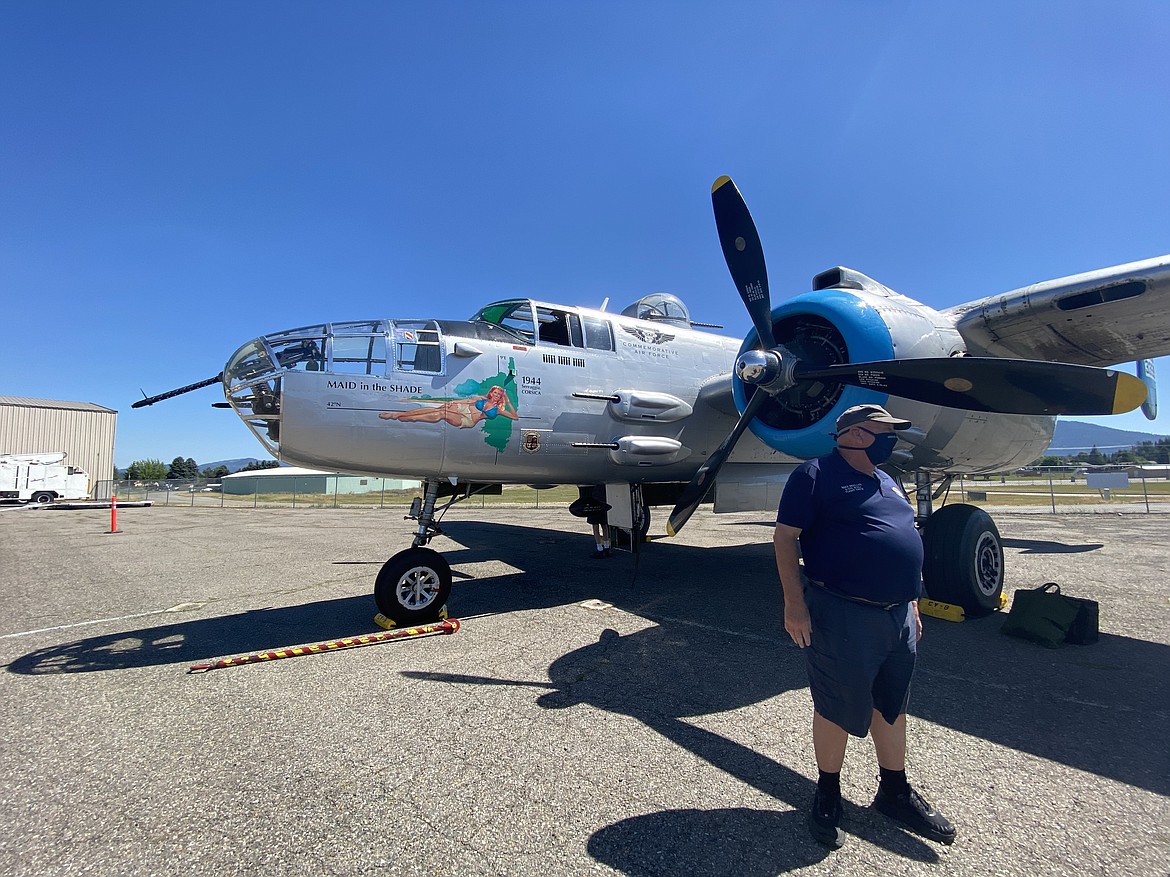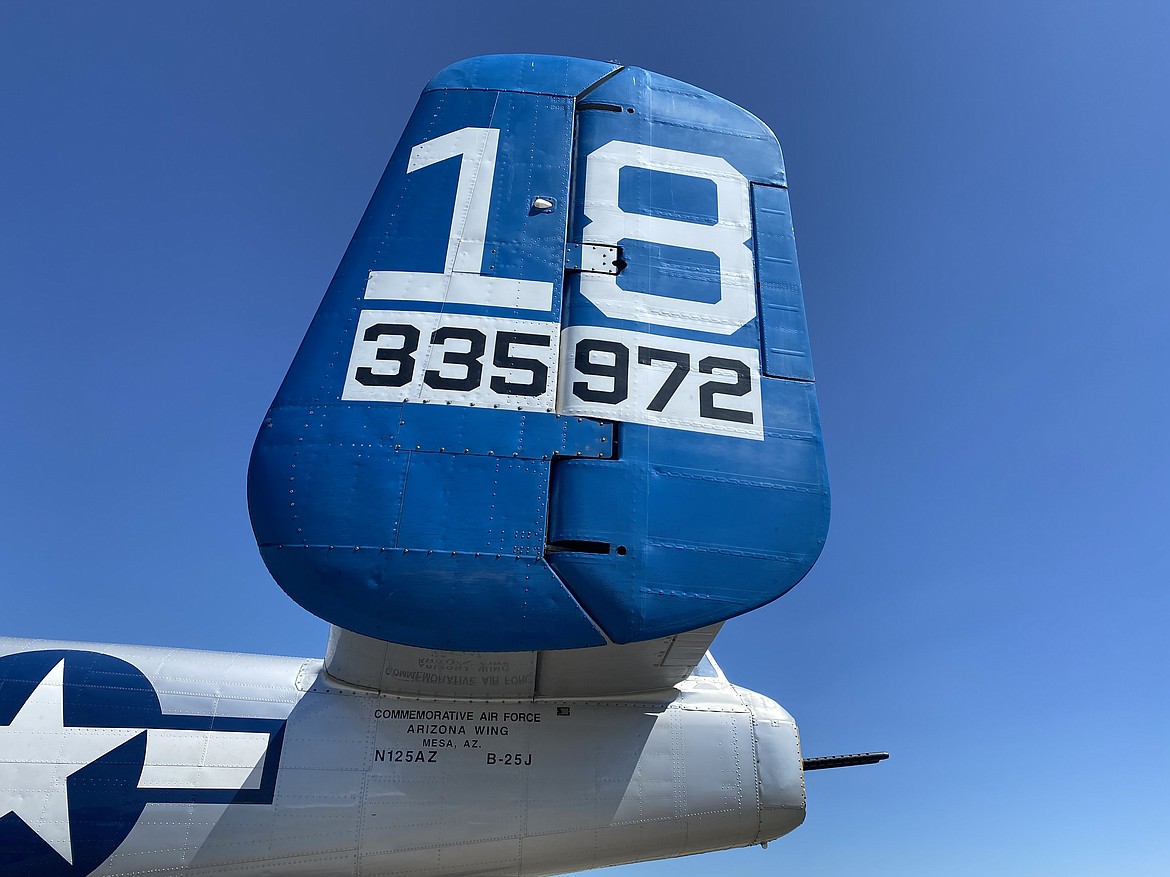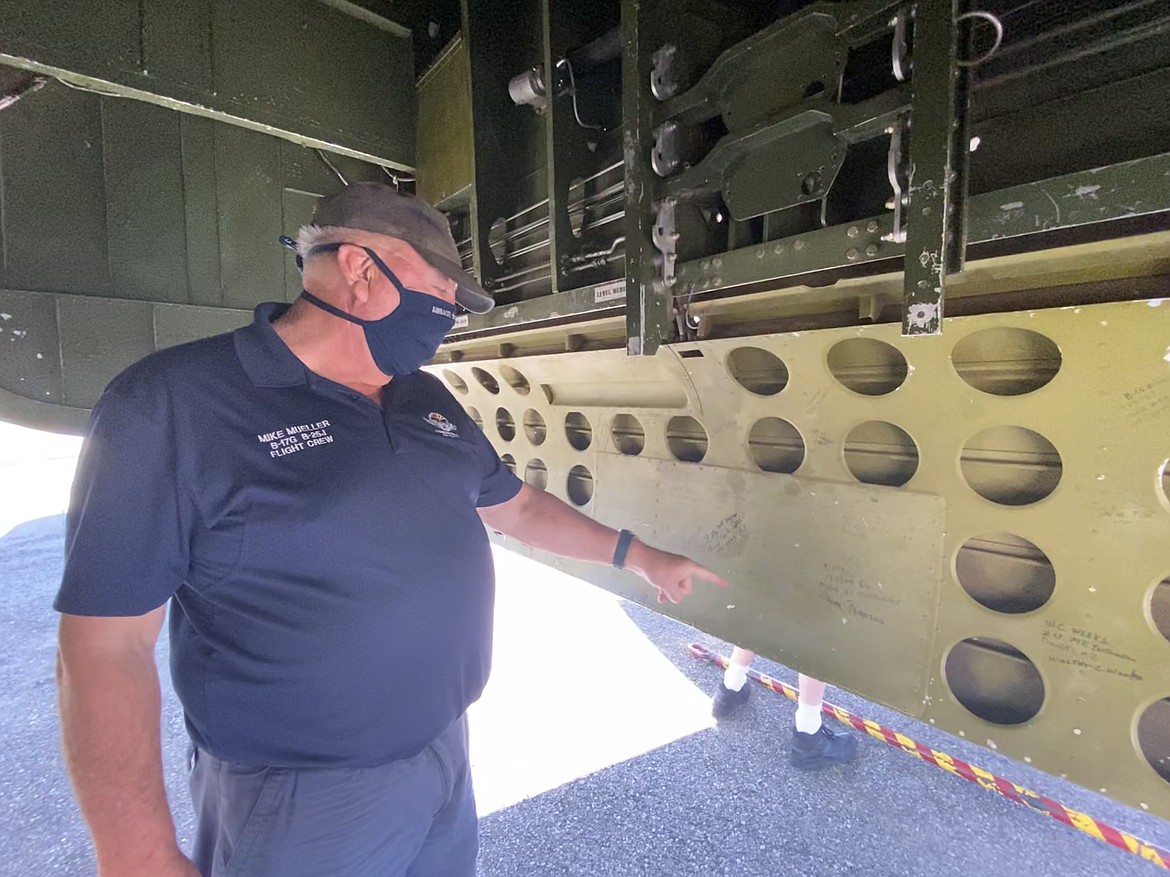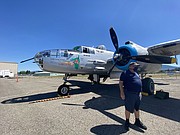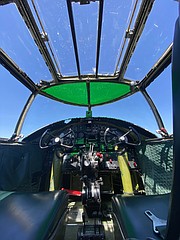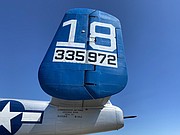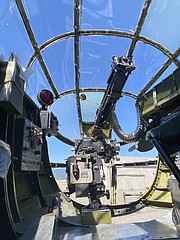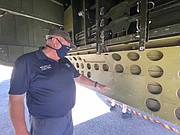Educate, inspire, honor
World War II bomber has landed in CDA
The three pillars of the Commemorative Air Force — educate, inspire, and honor — are why touring World War II fighter planes like “Maid in the Shade” is important today.
“We want to try to honor the men and women who flew these airplanes in combat, who worked on and built them,” ground operator and ride coordinator Mike Mueller said. “We want to show the airplane to the younger generations, who don’t know as much about the sacrifices made by their great grandfathers and great grandmothers.”
This weekend is especially significant, Mueller said, as Saturday marks the 75th anniversary of Victory over Japan Day, which marks both the surrender of Imperial Japan and the end of the Second World War. As part of the Flying Legends of Victory tour in Coeur d’Alene this week, the “Maid in the Shade” B-25J warplane is offering ground tours and in-air rides every day through Sunday.
After undergoing a 28-year restoration, the “Maid in the Shade” stands almost identical to its original condition.
“We took the airplane apart completely and put it back together again. When we got it she was in pretty sad shape,” Mueller said. “She is called the Maid in the Shade because when we first acquired the airplane we didn’t have a hangar, so all the work was outside. By the time we put her back together we had a hangar, so she was made in the shade underneath it.”
B-25s are considered one of the most versatile weapons of World War II, using it’s heavily armed frame to bomb, shoot, survey and patrol enemy territories throughout Europe and Asia.
The B-25 Bomber played a special part in World War II’s victory for the U.S., notably in the 1942 Tokyo Doolittle raid where 16 B-25s bombed cities across Japan.
“The U.S. wanted to strike back at the Japanese, and the only way they could do it was put land-based bombers on carriers and take them within 500 miles of Japan. They loaded 16 of these B-25s onto the World War II carriers, and they were discovered by a Japanese picket boat a day before they planned to fly,” Mueller said. “They launched early thinking they would never make it.”
Mueller painted the picture from Lt. Col. James H. Doolittle’s co-pilot, Dick Cole, who said the navigator told them they would have to swim 150 miles. Luck struck the fleet, and they caught a tailwind carrying them the extra 150 miles to the Chinese coast. According to Mueller two crews were captured by the Japanese, three were executed, two were imprisoned until the end of the war and the rest of the crew was found by Chinese partisans.
Not only is it the victory of World War II that Mueller remembers, but the comradery of the American people during a period of struggle.
“After Pearl Harbor was bombed, everyone came together. People just don’t realize the sacrifices that were made during World War II and how the country came together,” Mueller said. “It was a whole country effort, kind of similar to what we’re seeing now with COVID-19. It was an incredible time in history that we need not forget.”
To Mueller, this plane signifies the hard work by the American people. The tin and rubber drives, the long enlisting lines, the women working in the plants, food rations, and the men and women who put it all on the line for their country.
“That was what you did, it was one for all. I think it was one of the most marvelous times in this country, where everyone pulled together to make this a better place,” Mueller said.
Flying in the B-25J Mitchell is an innate experience according to Mueller, who lives for the rides traveling 1,500 miles in the air.
“If you’ve never experienced it, it’s different from anything you’ve done before,” Mueller said. “It’s loud, you can feel the vibrations of the air. There is nothing between you and the outside but a thin aluminum skin. I describe it almost as a visceral experience, you feel it almost as much as you hear it or see it.”
Riders on the Maid in the Shade can expect a 20-minute flight over Lake Coeur d’Alene or Hayden Lake with a retired Air Force pilot and in-depth description of the plane’s history. In-air flights are available Friday through Sunday for $325 to sit behind the machine guns in the waist gunner seat or $590 to sit in the front jump seat.
Saturday’s commemorative 9:30 a.m. flight will run an extended flyover traveling over Spokane, Lake Coeur d’Alene or Hayden Lake, and the homes of veterans and hospitals.
The warplane will be open to the public for ground tours Tuesday through Thursday from 9 a.m. to 6 p.m., and from 2 to 6 p.m. on Friday through Sunday. Ground tours are $10 per person or $20 per family. During tours, the airplane is open for an inside look of the cockpit, signatures on the bomb bay carrier, the waist gunner’s seat, and radio operator area.
Book online as seats are limited. Information: www.azcaf.org/tour


